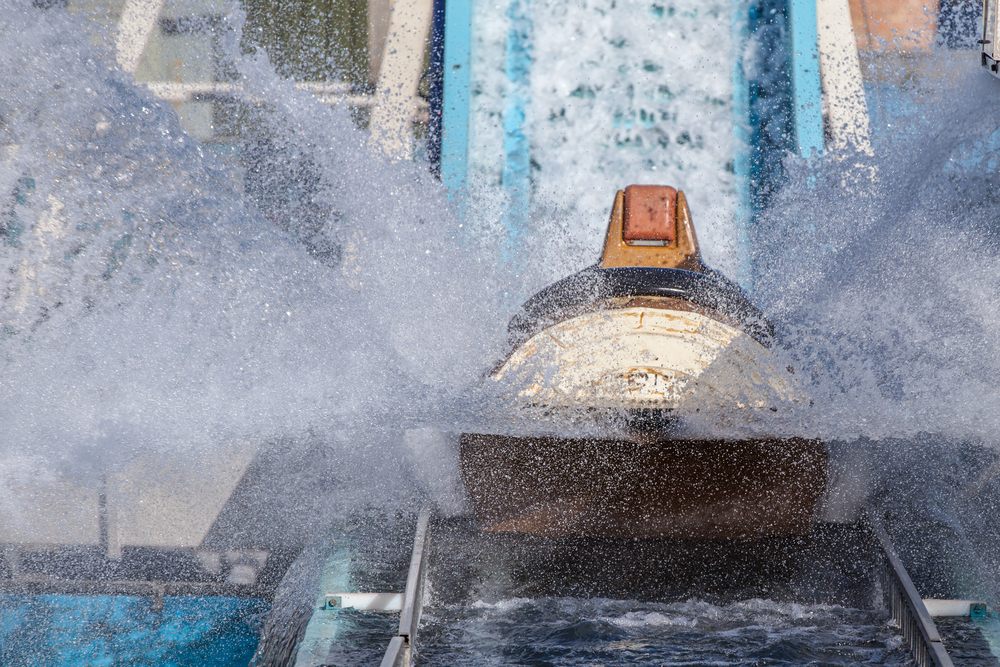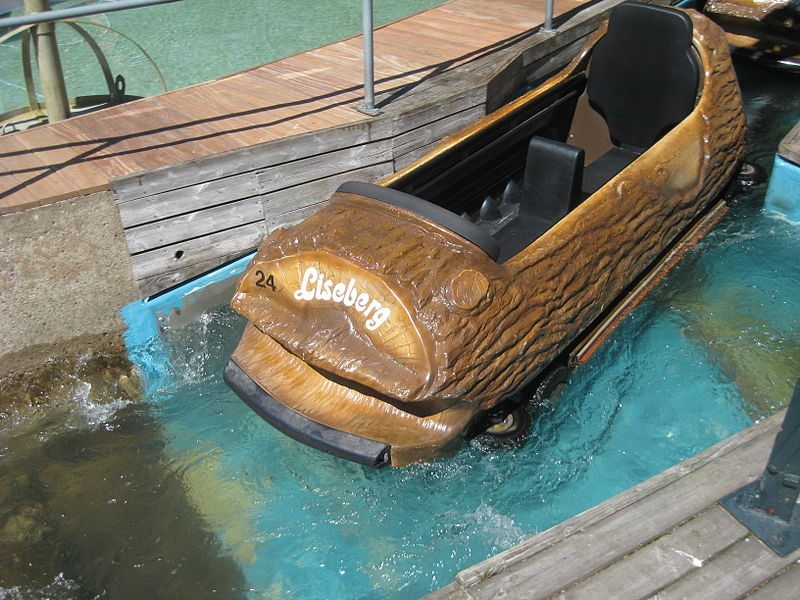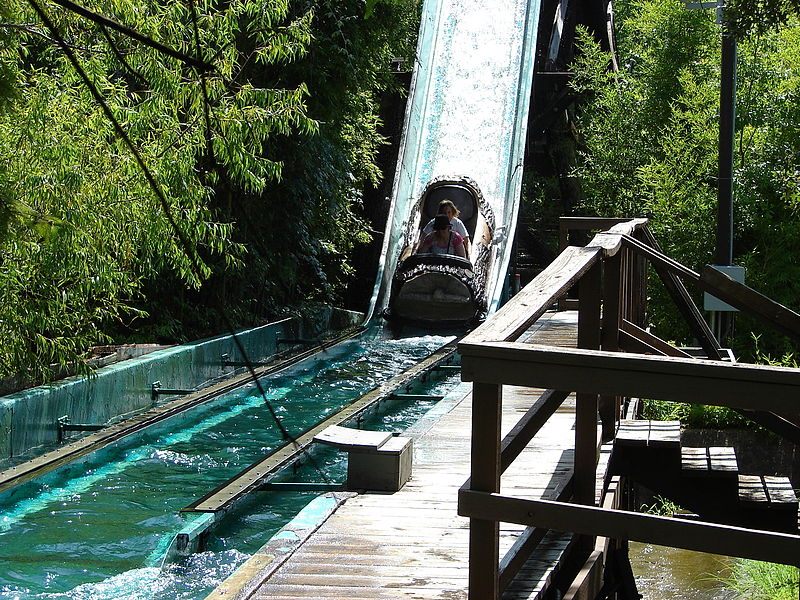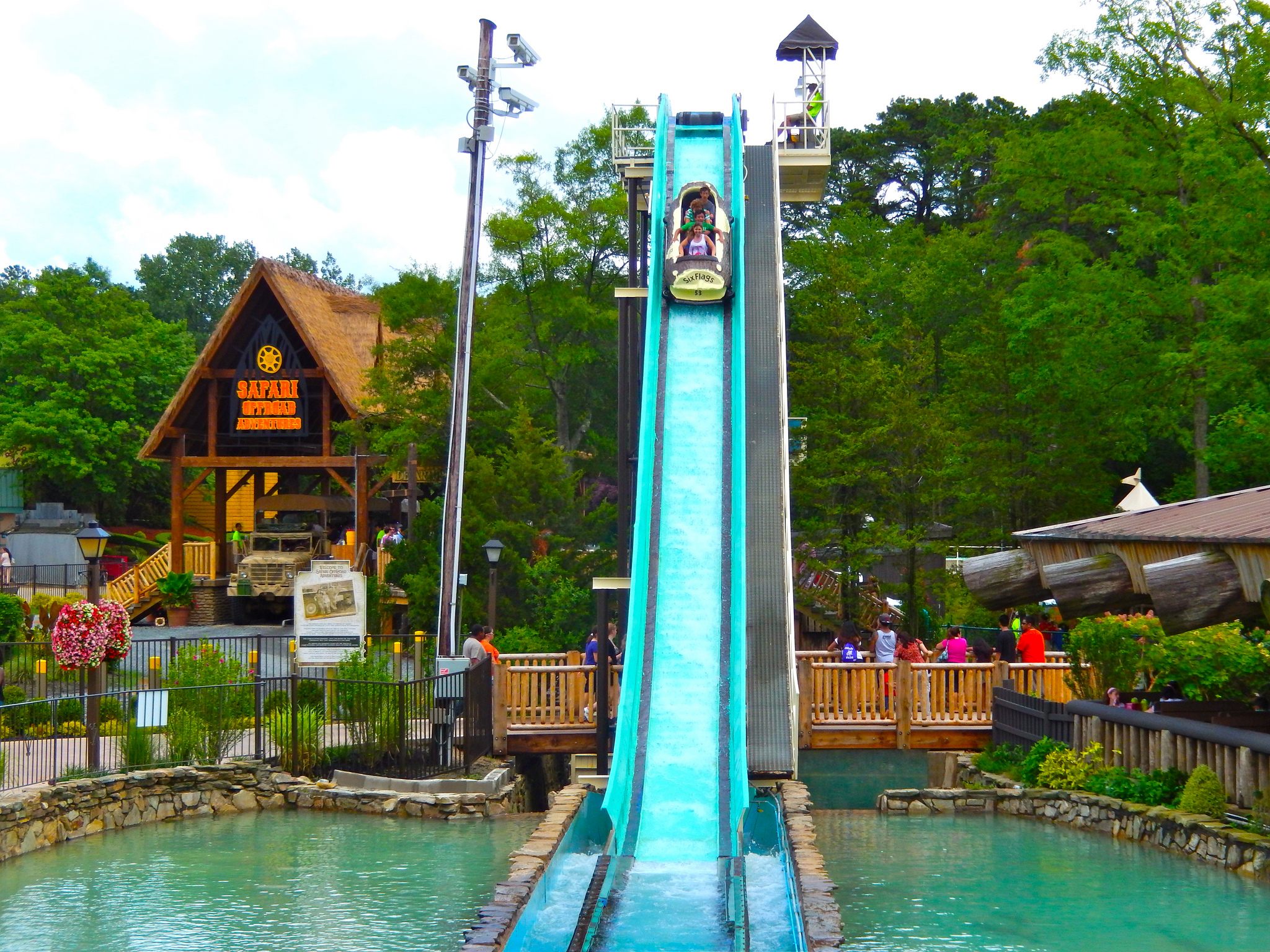Chronicling America’s Love of the Log Flume
Theme parks keep getting more incredible, but the log ride stays the same.

Still crazy after all these years. (Photo: ShaunWilkinson/Shutterstock.com)
It doesn’t matter whether your amusement park of choice is Disney World or the local local fun park. When you visit, you’re going to see a log flume.
No matter how advanced amusement technology gets, or how death-defying roller coasters become, the simple pleasures of the log ride continue to impress. Not bad for a ride based on a timber transport system.
“In the parks that have them, they are always one of the more popular rides,” says Jim Futrell, a historian with the National Amusement Park Historical Association. They might seem quaint, but according to Futrell, it is this simplicity that makes log flumes such fixtures in the amusement park industry.
“The ride has a broad appeal because it has an amount of thrill to it, but it is not overwhelming for little kids and older people,” he says. “And it also doesn’t drown you.” The log flume is also able to be lightly or heavily themed depending on the park, which gives it a broad business appeal.

A log flume, the not-fun kind. (Photo: BridalVeilOregon.com/Public Domain)
Long before the log flume was an amusement park staple, log flumes were used in an industrial setting. The first commercial log flumes were built in the mid-1800s by sawmills that used them to transport logs across long distances. Long, usually V-shaped troughs filled with water would carry freshly cut logs over chasms and tough terrain. This eliminated the need to create roads and bridges for the lumber to be transported overground.
Many of the original log flumes could stretch for miles, just like the tracks of a locomotive. What is thought to have been the longest log flume of all time ran 62 miles between the Sierra Nevada Mountains and a processing site in Sanger, California. Owned by the King’s River Lumber Company, the massive flume was built in a little over a year, and processed thousands of felled trees. (Downside: this devastated the local population of redwood trees, many of which were over 2,000 years old.)

Much funner. (Photo: Albin Olsson/CC BY-SA 3.0)
In order to maintain the long system of chutes, and make sure they didn’t become clogged or broken, the owners would employ people known as “flume herders” to inspect the length of the transport channel, looking for potential log jams or broken portions of the flume. Sometimes these herders would travel down the flumes in custom-built vehicles, but more often than not, they would ride one of the logs down the path. While it was exceedingly dangerous, it was also a lot of fun.
Meanwhile, as amusement park rides developed and evolved in the early 20th century, boat and chute rides began to spring up, taking their inspiration from the fun-looking logging technology. One was a ride known as “Shoot-The-Chutes,” which usually featured a larger passenger boat that would slide down a chute and skip along the water at the bottom before being manually hoisted back up the slope. Another popular boat ride was the mill ride, which was usually just a boat that floated along a trough, through darkened mill-building tunnels.
The log flume was born out of a sort of hybrid of these early amusements. “Later on, in the years following World War I, you started to see what was called a “mill chute” ride, which kind of combined the old mill rides with a Shoot-The-Chutes ride,” says Futrell. “[It] actually has a strong resemblance to today’s log flumes, with a boat ride through a trough, ending with a lift up a hill, and a splashdown.”

El Aserradero today. (Photo: Loadmaster/CC BY-SA 3.0)
The first log flume ride as we know it today debuted in 1963 at Six Flags Over Texas. Called El Aserradero (translated as, “The Sawmill”), the ride was the creation of Arrow Development, an amusement designer that had been in the business since the 1940s. It featured two rises that the logs would travel up before crashing back down on the other side, splashing the riders.
Before coming to Six Flags Over Texas, Arrow Development had worked at designing rides for the Disney parks such as the Mad Tea Party and Mr. Toad’s Wild Ride. When they came to Six Flags to install a water chute ride, they went back to the roots of the ride and turned it into a themed simulation of riding a commercial log flume. Passengers would board fiberglass logs from inside a replica mill building and ride through the flume along a shallow water trough that led to small hills.
El Aserradero proved so popular that Six Flags Over Texas built a second log flume ride to meet the new demand for the ride. Then log flume rides began popping up at parks all over the world. “It became an industry staple through the ’60s and ’70s, and into the ’80s,” says Futrell. “Arrow pioneered it, and most of the major European manufacturers came out with a version.”

A modern log flume. (Photo: Sarah_Ackerman/CC BY 2.0)
Some kept the simple logging theme, while others built more elaborate versions, like the Timber Mountain Log Ride at Knott’s Berry Farm. Disney’s Splash Mountain turned the flume ride into a perilous journey complete with animatronics, tunnels, and other flourishes.
According to Futrell, the other big innovation that helped spread the log flume came in the ’80s when the Hopkins Rides company, formerly a manufacturer of ski lifts, began selling cheaper, sturdier log flumes that used cement troughs, which were a more affordable option than the usual fiberglass for smaller and mid-size parks.
Now log flumes can be found just about everywhere, including new parks in China and the Middle East, but the older rides are beginning to disappear, both because of the aging fiberglass construction, and because of the ride’s ubiquity. “One of the challenges in the United States is market saturation,” says Futrell. “Most of the parks big enough to buy one have bought one, and those that might not have one, had one at one time and removed it.”
Nonetheless, El Aserradero is still in operation at Six Flags Over Texas. Over the years it incorporated animated figures and a covered mill building in an attempt to keep up with the more elaborate rides being developed, but those additions have since been removed and the ride is once again a simple log flume.
“Six Flags has shown no sign of getting rid of that ride,” says Futrell. “I’m sure in those hot Texas summers, it still maintains the same appeal it had 50 years ago.”








Follow us on Twitter to get the latest on the world's hidden wonders.
Like us on Facebook to get the latest on the world's hidden wonders.
Follow us on Twitter Like us on Facebook